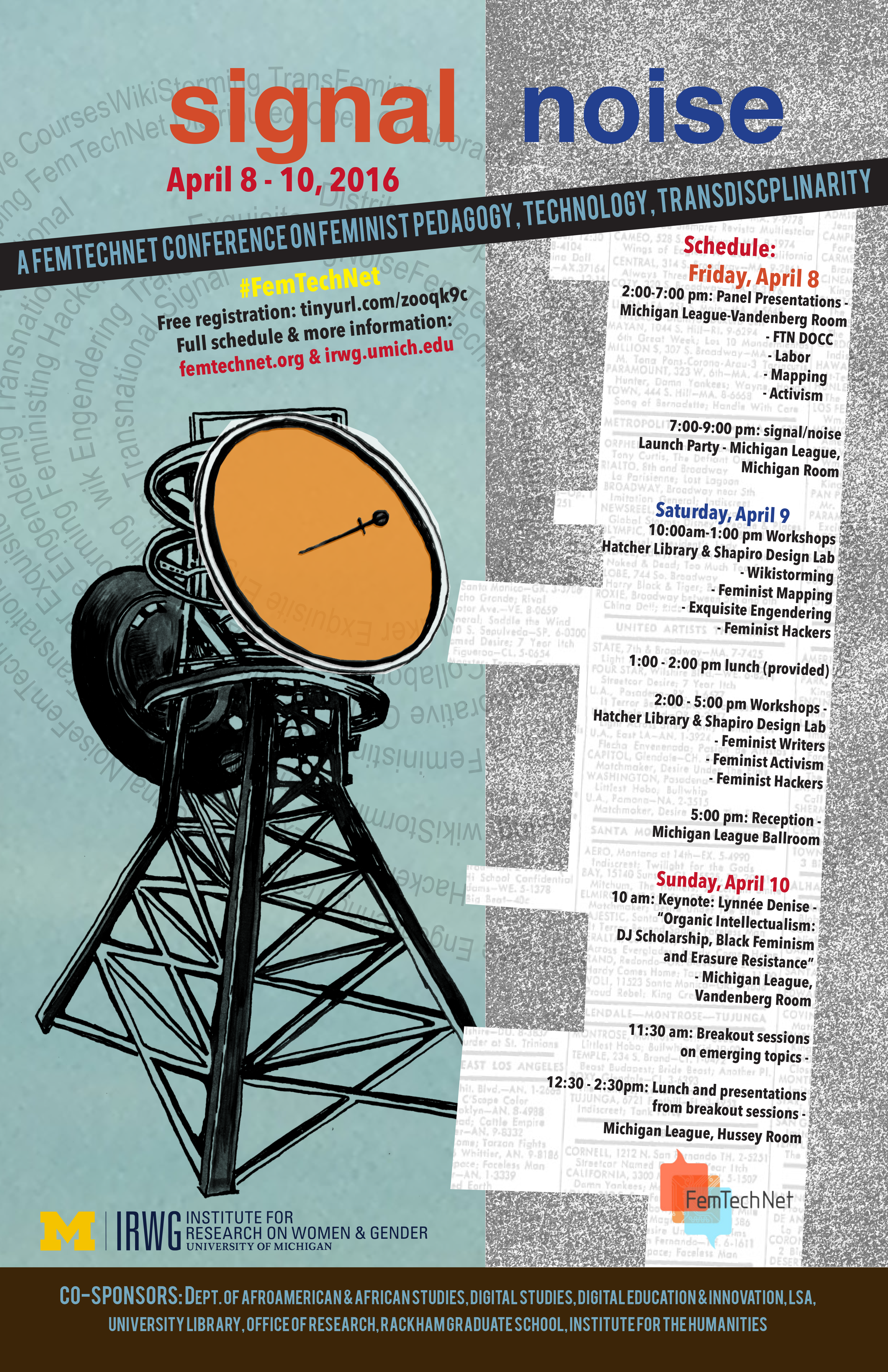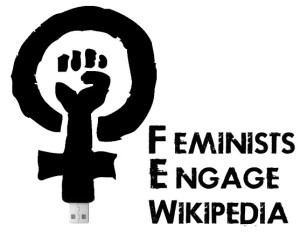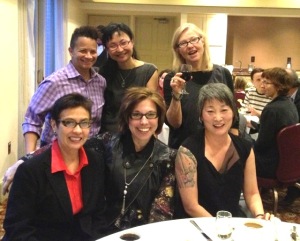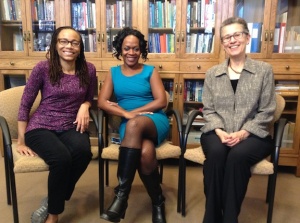Message from 2014-2015 Co-Facilitators
A bit over a year ago, we (Lisa Nakamura, Liz Losh, and Sharon Irish) decided to serve as co-facilitators of FemTechNet. Anne Balsamo and Alex Juhasz, the co-founders and inaugural co-facilitators of FemTechNet (2012-14), set a very high bar! To guide and support this collective of amazing thinkers and doers has been heady, intense, fun, and hard. FemTechNet has grown quickly: we have about 400 people on our e-mailing list; nearly 800 on our Facebook page; and and over 100 people participated in our August 2015 workshop, from across about 12 countries and 12 time zones.
We added a Project Manager, the hyper-capable Ashley Walker, who moved us from chaos to less-chaos, and found a congenial and warm institutional grounding as a Research Program at the University of Michigan’s Institute for Research on Women and Gender. In response to growing public awareness about online misogyny and racism, we helped create more public resources for rapid response. We created an Advisory Board and continued to connect with sister organizations in the world of feminist technology activism and scholarship. We’re making new content–podcasts are in our future. We have very active committees providing context and material for at least 15 distributed open courses being offered this year. We have collectively written grants and articles, and edited books and journals. We raised money; attended meetings online and face-to-face; traveled to conferences around the world; joined panels; gave talks; received and sent gi-normous amounts of email; and experimented with a range of different digital platforms, although trust and safe spaces will always be a concern.
The Distributed Open Collaborative Conference being organized by Karen Keifer-Boyd and Marla Jaksch, for April 8-10, 2016, in Ann Arbor, Michigan, will be another highpoint to showcase the work of our wonderful FemTechNet learning communities in developing the next generation of feminist researchers.
Guess what? We are tired from all this activity! In the process of moving to new responsibilities ourselves, we drafted procedures for future shifts in leadership. We three are not leaving FemTechNet, not by a long shot: Each of us has ongoing committee and publishing projects related to the collective.
We applaud the Feminist Five who have stepped forward to co-facilitate this year!
Onward, Lisa, Liz, and Sharon



